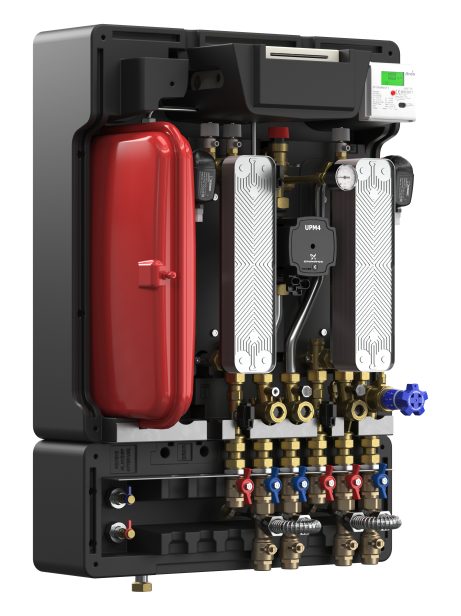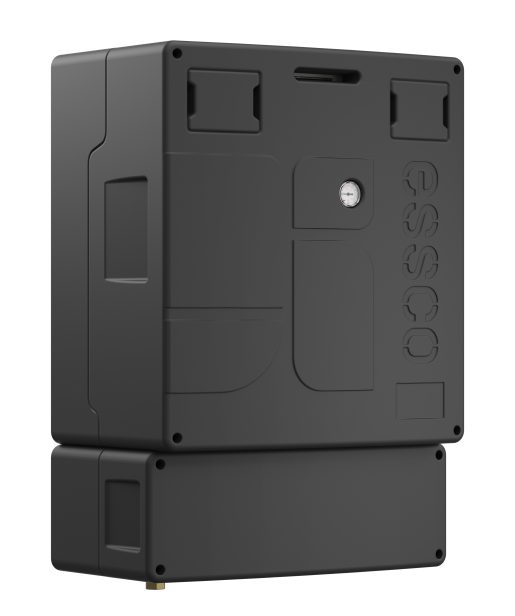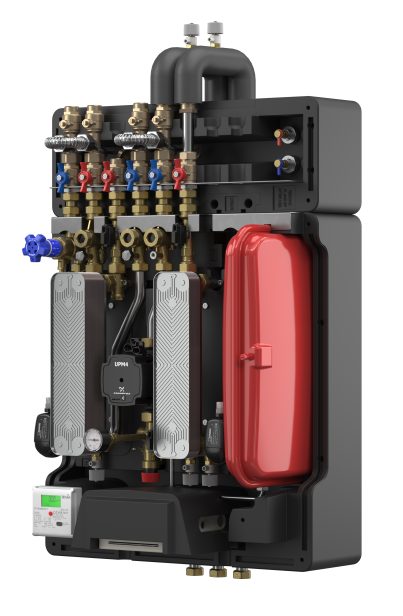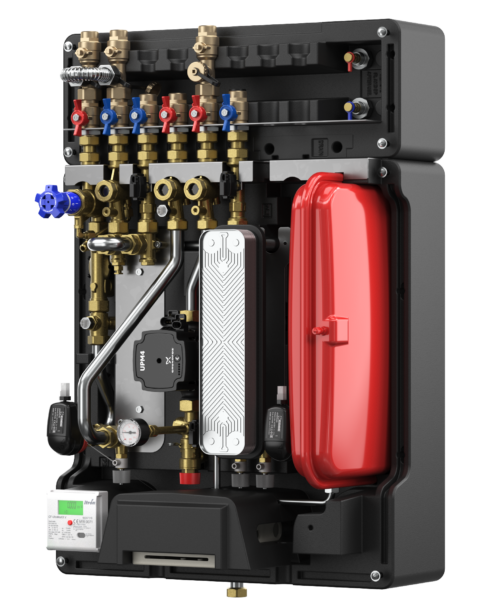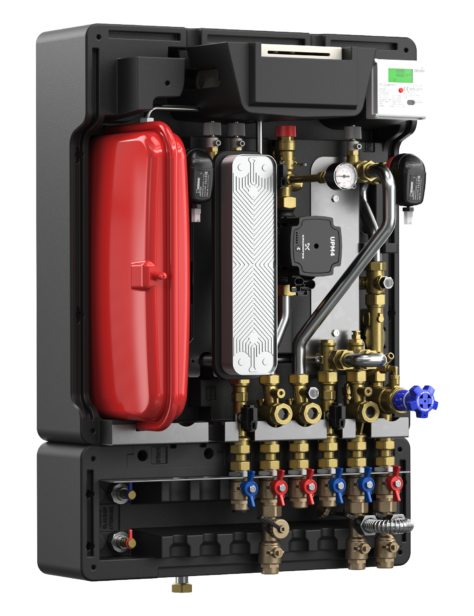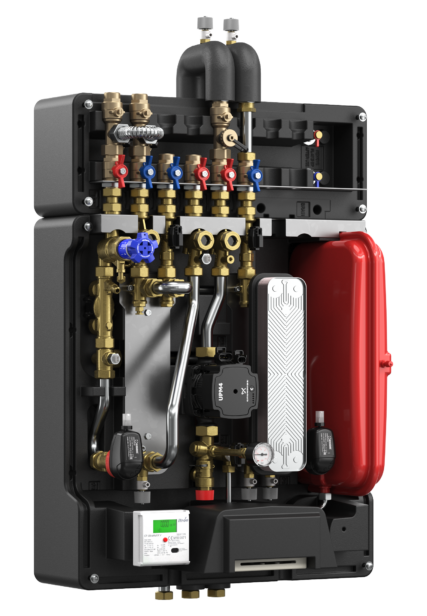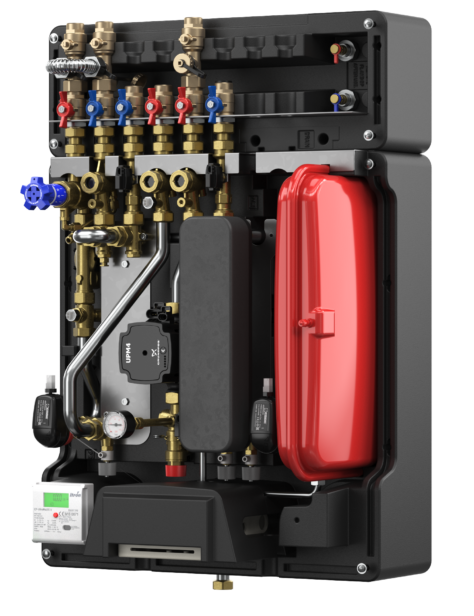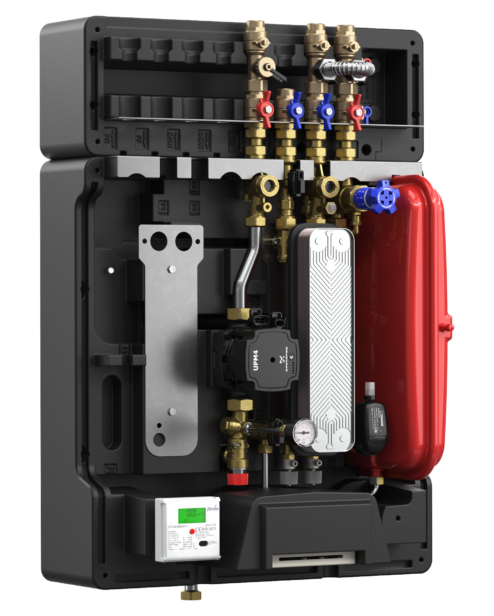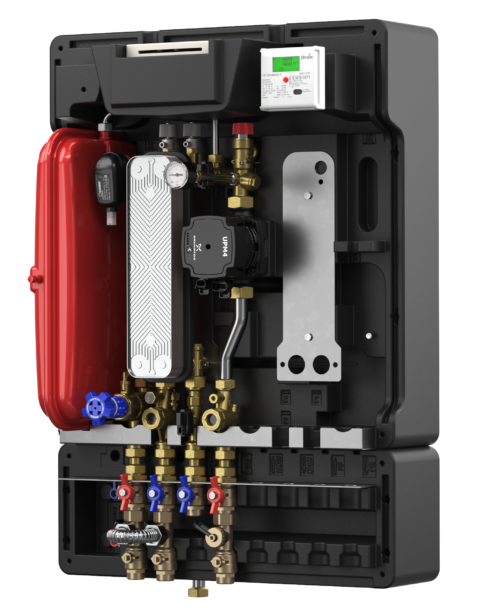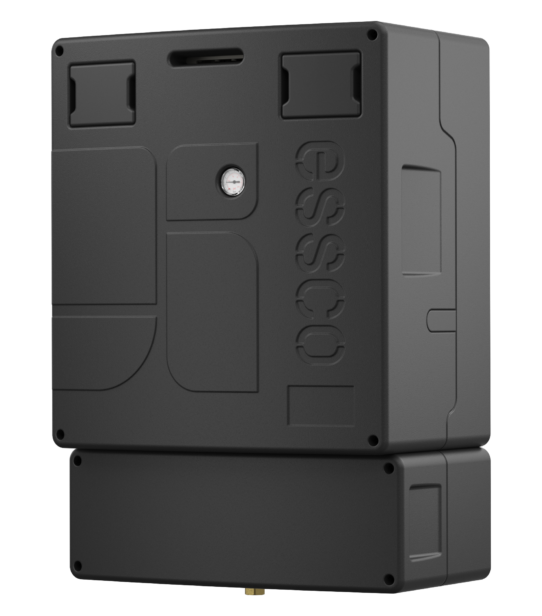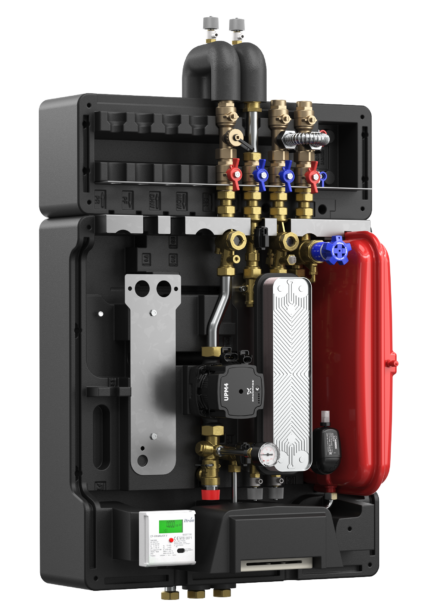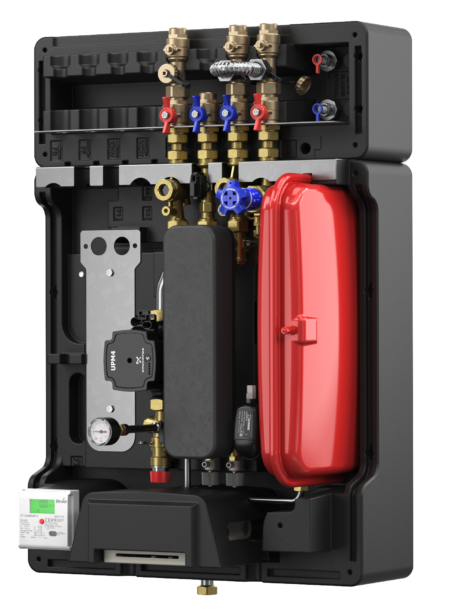To capitalise on the benefits that heat networks offer…
It’s vital for systems to be designed and delivered with installation, performance, end user control and ongoing maintenance in mind.
This includes the heat interface unit (HIU) that’s installed in each home to provide independent heating and domestic hot water, similar to a traditional boiler, but powered by centralised plant.
Find out more about our EDGE range of heat interface units below.
DESIGN
- Flexible plate heat exchanger options
- Fully Insulated HIU and valve enclosure for minimal heat losses
- Quick response to DHW/HTG demands
- Designed for easy installation with no additional brackets or jig required
INSTALLATION & MAINTENACE
- Reversible design
- All components are FULLY accessible via the front of the unit
- Perfect for prefabricated utility cupboards
- Detachable flushing bypass (in line with CIBSE CP1)
- Inspectable strainers for a quick visual check
- Web App with engineer mode
EFFICIENCY & REGULATIONS
- Tested to the BESA UK Standard for Heat Interface Units*
- Regulation 4 compliant with WRAS approved unit and components (Pending)
- Programmable keep-warm for a quick hot water response
METERING AND BILLING
- Billing neutral, ready to connect to any standard Credit or PAYG system
- Open access to meter readings via standard M-Bus set-up or remotely via third party
CONTROL
- Intelligent electronic PID control modulates control valves to match real-time demands and improve efficiency
- Web App using inbuilt Wi-Fi P2P (Peer-to-Peer)
- Can connect to homeowners Wi-fi network for remote fault finding and control
EDGE-T
Twin plate heat interface units with indirect space heating and instantaneous domestic hot water.
- Twin plate heat exchanger
- Indirect space heating
- Instantaneous domestic hot water
- Tested to BESA Standard*
- Most popular model in the range, designed for typical heat network systems
- Equivalent to a combi boiler in terms of performance and functionality
- Suited to homes with one to four beds
EDGE-C
Single plate heat interface units with indirect space heating and direct cylinder feed for DHW.
- Single plate heat exchanger
- Indirect space heating
- Direct cylinder feed
- Suited to applications where:
Stored hot water is more practical or desirable.
A secondary return system is being used.
EDGE-S
Single plate heat interface units with indirect space heating only.
- Single plate heat exchanger
- Indirect space heating
- Typically suited to:
Retrofit applications.
Where an S or Y plan system is being used
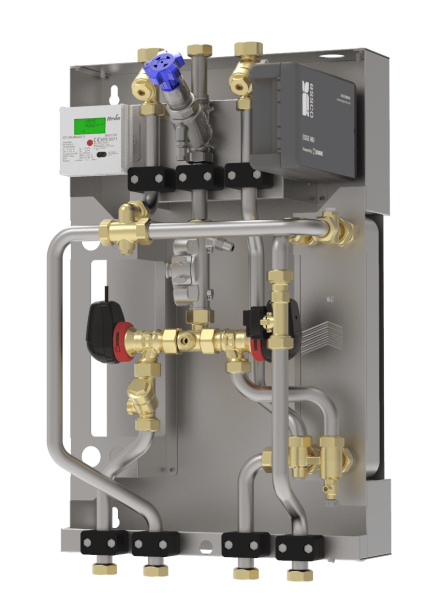
EDGE-D
Single plate heat interface units with indirect domestic hot water and direct space heating.
- Single plate heat exchanger
- Direct space heating
- Instantaneous domestic hot water
- Cost effective solution as no waste pipe is required from heating system Pressure Relief Valve (PRV).
- Suited to care homes and retirement properties where the risk of heating system damage is low.
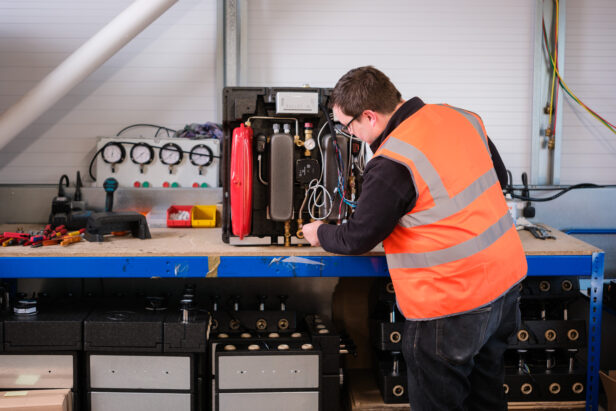
Independently Tested to the BESA Standard
EDGE T1 HIU is tested to the BESA UK Standard for Heat Interface Units (2020) with published results.
VWART: 28°C / 29°C
(High / Low temperature test)
*EDGE T2 HIU will undergo the latest BESA test (2023) imminently.
Official results can be found on the BESA website or in the download section below.
Documents
Frequently Asked Questions
A heat network, also known as district or communal heating, is a system that supplies LTHW to multiple buildings or dwellings from a central source (plant room). Instead of each home or business having its own boiler, heat is generated in one location (often using renewable or low-carbon energy) and delivered through insulated pipes within the heat network. This setup improves energy efficiency, lowers carbon emissions and makes it easier to use sustainable technologies.
As of 2023, around 900,000 homes across the UK were connected to heat networks. That’s roughly 3% of all homes – and the number is steadily rising as part of the national effort to cut emissions and improve energy use.
Heat networks can use a mix of energy sources, including combined heat and power (CHP), waste heat from industry or data centres, energy-from-waste plants, biomass, and renewable options like heat pumps, geothermal, and solar thermal. Electric boilers may also be used, especially to support peak demand. The choice depends on local resources, carbon goals, and system design.
A HIU is a compact unit installed in individual dwellings or buildings that are part of a wider heat network. Instead of needing a boiler or gas supply in each home, the HIU acts as the connection point, drawing heat from the heat network and delivering it where it’s needed inside the property.
Here’s what a HIU does in simple terms –
- Transfers heat from the network’s central supply into your home.
- Provides space heating (radiators or underfloor) and often instantaneous domestic hot water.
- Works a bit like a boiler, except it doesn’t generate heat, it just distributes it efficiently.
- It gives each dwelling independent control over heating and hot water, even though they share the main heat source.
- Enables metering and billing per household, so users only pay for what they use.
- Removes the need for gas connections and individual boilers, lowering maintenance and improving safety.
Essco EDGE heat interface units are electronically controlled and supply both tertiary space heating and domestic hot water. Both circuits are hydraulically separated from the secondary heat network by twin SWEP plate heat exchangers (PHEs). Units feature first-class components, Including the market-leading flow control valve from ESBE and electronic temperature control technology.
Designing an effective heat network starts with a focus on energy efficiency and long-term reliability. Good practices include keeping pipework routes as short and insulated as possible to minimise heat loss, sizing the system accurately to meet demand without oversizing and planning for future expansion. Using low-carbon heat sources, integrating smart controls and ensuring each property has its own Heat Interface Unit (HIU) for independent control and metering are also key. Early stakeholder engagement, especially with developers, residents and local authorities, helps ensure the network is well integrated and user focused from day one.
For more information, refer to CP1 Heat Networks: Code of Practice for the UK (2020).
The installation time for a heat interface unit (HIU) depends on several factors, but here’s a general breakdown:
New build (pre-plumbed, first fix complete):
2 to 4 hours per unit
If the pipework and risers are already in place, the HIU can be mounted, connected, tested, and commissioned relatively quickly.
Retrofit in existing buildings:
4 to 8+ hours per unit
Older properties may need extra time for adapting pipework, managing access, or replacing legacy systems.
Complex installs (e.g. with metering, BMS integration, or multiple zones):
Up to a full day per unit
This includes flushing, commissioning, and any additional controls setup.
As HIUs are an inherently low maintenance space heating system, the recommendation from BSRIA BG 62/2015 is that a maintenance check every 3 years should be sufficient. Essco Group recommend that strainers however are checked at least once annually, depending on the water quality of the installation. Any build-up of debris can cause flow restriction and when left unchecked, damage to components within the HIU.
BSRIA inspection and maintenance procedure guidance recommends the following checks are carried out:
- No leaks associated with HIU or secondary distribution
- Primary isolation valves are operable
- Internal strainers are clear
- Supply differential above required minimum
- Thermal insulation is intact
- Control valves respond to demand signals for heating and hot water
- Supply temperatures to heating and hot water are as when the unit was commissioned
- Check mains pressure storage water heater safety valve (where fitted)
- Heat meter registers demand (or replace and commission new heat meter if scheduled)
- Consumer is satisfied with heating and hot water performance
Water quality is critical for the performance, efficiency and longevity of heat network systems, especially those using low-carbon technologies like heat pumps or modern heat interface units (HIUs). Poor water quality can lead to:
- Corrosion of pipework and components, particularly in mixed-metal systems.
- Scale formation, which reduces heat transfer efficiency and increases energy consumption.
- Blockages in strainers, valves, and HIUs, leading to maintenance issues and customer complaints.
- Reduced system life and increased risk of costly repairs or premature replacement.
Maintaining clean, treated and chemically balanced water helps keep systems running smoothly, reduces O&M costs and is essential to meeting performance guarantees in district and communal heating schemes.
What is VDI 2035?
VDI 2035 is a widely respected European guideline that sets the standard for water quality in heating systems, including those used in heat networks. It focuses on preventing scale and corrosion through proper water treatment and system design.
It consists of two key parts:
VDI 2035 Part 1 – Scale Prevention
Focuses on preventing limescale build-up by limiting hardness in fill water.
Suggests deionised or softened water for closed-loop heating systems, especially where high temperatures or small pipe diameters are involved.
VDI 2035 Part 2 – Corrosion Prevention
Addresses corrosion by maintaining optimal pH, conductivity, and oxygen levels.
Emphasises deoxygenated water, stable pH (typically 8.2–10), and conductivity limits tailored to the system’s materials and size.
Why it matters in UK heat networks –
While VDI 2035 isn’t a UK regulation, it’s increasingly seen as best practice, especially in specifications for communal and district heating schemes. Many consultants and contractors reference it when designing and commissioning systems to:
- Prevent performance degradation
- Reduce callouts and warranty claims
- Align with CIBSE CP1 heat network design guidance (which echoes many of the same principles)
Energy use is metered, but instead of tracking gas like a traditional boiler, it measures the actual heat delivered to the dwelling in kilowatt-hours (kWh). Each home has its own heat meter, so residents are only billed for the heating and hot water they use, offering clear, accurate and fair energy monitoring.
What are the payment options?
Payment systems can vary depending on the setup, but common options include prepayment (pay-as-you-go) systems, monthly billing or direct debit based on metered usage. Many providers offer online portals or mobile apps for easy top-ups and account management. Some systems also allow residents to view real-time usage, helping with budgeting and energy awareness.
Essco EDGE HIUs are billing neutral, ready for connection to any standard credit or PAYG system, so no tie-ins. We provide open access to meter readings via standard M-Bus set-up or remotely via third party.
District and communal heating can be cheaper and greener long term, but this depends on how it’s designed, managed and maintained.
A well managed scheme should prioritise energy efficiency, fair billing and ongoing optimisation.
Ultimately, the ability to change provider will future proof building operators against market changes and allow them to act in the best interests of residents. Essco EDGE units are open access, offering the flexibility to change billing provider and can integrate easily with existing communication networks where required.
Currently, heat networks in the UK are not regulated in the same way as gas or electricity, but that’s changing. Ofgem has been appointed as the future regulator, with new rules expected to come into force to ensure fair pricing, reliable service, and consumer protection. These upcoming regulations aim to bring greater transparency, improve standards and give users similar rights to those they have with other energy suppliers.
In the meantime, Heat Trust acts as a voluntary protection scheme for heat network customers in Great Britain.
Yes. New buildings can be designed to connect easily to a heat network, while existing buildings can also be connected, though they may need some upgrades to their heating systems or insulation to ensure efficiency. Retrofitting is a common and proven approach.
5th generation district heating and cooling is a smart, low-temperature energy network that moves heat around at roughly the same temperature as the ground or air, letting buildings take or return heat as needed. Instead of one big boiler or chiller, each building uses its own small heat pump to raise or lower the temperature, making it more energy-efficient, flexible, and ready to work with renewables or waste heat from places like data centres.
Latest News & Case Studies

Rethinking Heating, Cooling and Air Quality for 2026
Something new is coming in 2026. We are preparing to introduce a new product designed to bring heating, cooling, ventilation and filtration together in one integrated system. Created with modern buildings in mind, it responds to changing regulations, higher performance expectations and the growing need for lower-carbon comfort systems. This new approach focuses on doing…

Festive Opening Hours Update
As the festive season approaches, we would like to share our opening hours and important order information for the Christmas and New Year period. Our offices will close at 5pm on Monday 22nd December and reopen as normal on Monday 5th January. Please place orders as early as possible if you need delivery before the…
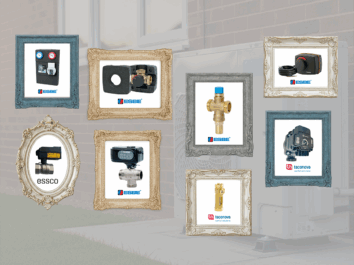
Introducing our Heat Pump System Essentials
Looking for reliable accessories for your heat pump installs? Meet the family that keeps every installation performing smoothly. With the growing demand for low-carbon heating, installers are under increasing pressure to deliver systems that are both high-performing and easy to maintain. That’s where Essco’s heat pump accessory range comes in. Our product collection has been…

Essco’s Haunted House of Heating
Welcome to Essco’s Haunted House of Heating 👻 🎃 No Tricks. Just Terrifyingly Good Service. Step inside…if you dare. Here’s what happens when you summon Essco Group this Halloween – 🕷️Our Approach 💀 Our Promise Happy Halloween from the Essco team.


